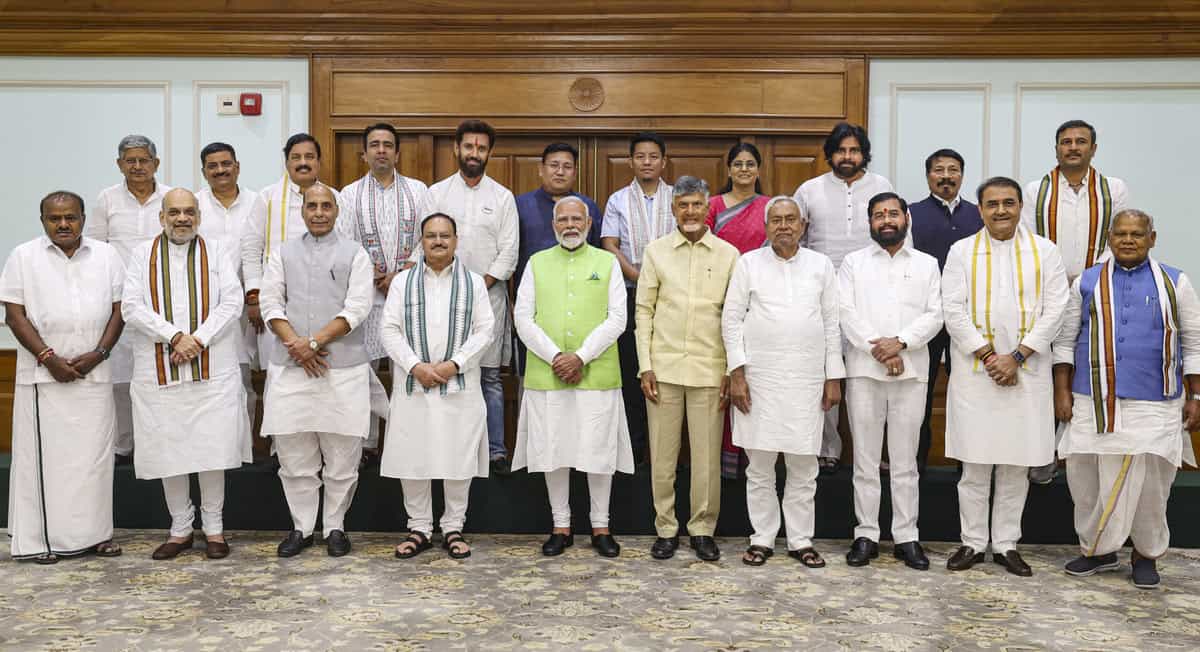
By Ablaz Mohammed Schemnad
The culmination of the recent electoral season in India has brought a sense of relief among voters, alleviating concerns regarding the integrity of the electoral process and the resilience of democracy itself. Post-poll discussions across the nation’s urban and rural landscapes have shifted away from uncertainties regarding the fairness of elections, reflecting a newfound confidence in the democratic process. However, amidst this sense of relief, significant takeaways from the electoral verdict underscore the inherently dramatic nature of Indian democracy, making it nothing less than a Netflix thriller movie plot.
The key talking point was the unanticipated out-turn by the Samajwadi Party in Uttar Pradesh. The state that hosts more people than Brazil is always the most crucial electorate for achieving the aspiration of forming a government at the national level. Under the leadership of Akhilesh Yadav, the Samajwadi Party (SP) secured 37 out of the total 80 seats, out-manoeuvring the Bharatiya Janata Party (BJP), which secured 33 seats, a stark contrast to exit poll projections of 60 seats for the party. The Indian National Congress (INC), which was in a coalition with the SP through the much-celebrated INDIA bloc, managed to succeed in securing six seats in the state. The defeat of Smriti Irani (BJP) in Amethi against the INC’s Kishori Lal Sharma by a significant margin has also captured considerable attention. Irani’s controversial statements in Parliament, notably regarding menstrual leave policy and the Rohith Vemula incident had drawn criticism and may have contributed to her electoral setback.
The BJP’s promise and a major standout point, the Ram Mandir question, seem to have added the least traction. Voters from the Faizabad constituency under which Ayodhya falls, seem to be unhappy with the more relevant developmental questions like employment generation and safety rather than faith.
Nonetheless, Prime Minister Narendra Modi was victorious from the Varanasi constituency, though with a significantly reduced majority.
Almost all the exit polls turned out to be inaccurate and far from the real scenario. Axis My India’s Pradeep Gupta, in an emotional moment on television admitted to wrong statistical forecasting. Axis My India’s exit poll data had complemented the NDA’s recurring slogan of ab ki baar, chaar sau paar (we cross 400 this time), with Gupta openly stating that he had data from each constituency to prove his prediction. The Indian stock market saw a bullish effect, with both Sensex and Nifty hitting record highs, adding Rs.12.48 lakh crores to the market cap of BSE stocks. Some quarters of the BJP had a hard time towards the end of the vote counting as the slogan failed to show light in results, and the current strongest political party struggled to reach even the majority mark individually, leading Modi’s party to rely on the mercy of “Muslim-friendly allies,” as Jawed Naqvi has written. Contrary to the BJP’s Hindutva-nationalistic views and promises with a stern anti-Muslim approach, its allies in the NDA have a decent relationship with the minorities in their respective states, with Chandrababu Naidu’s TDP even promising reservation for Muslims in the state of Andhra Pradesh.
On the other hand, we also saw the BJP making an entry in the southern state of Kerala for the first time. For seven decades, Kerala had maintained consistent two-party competition in the state between the United Democratic Front (UDF) and the Left Democratic Front (LDF). BJP’s Suresh Gopi, the actor-turned-politician, won the Thrissur constituency with a significant lead of 70,000 votes. The rest of the 19 seats were for the INDIA bloc, one for the LDF and the remaining 18 for the UDF.
The next strictly no-BJP state, Tamil Nadu, did not give any space for parties except the state-ruling DMK, let alone for the BJP. Karnataka and Telangana have spread out their support for the NDA and the INDIA bloc, even though on a disproportional scale in Karnataka. Hyderabad constituency has elected Asaduddin Owaisi for the fifth consecutive term, defeating the controversial Madhavi Latha, who had attempted to instigate communal hatred among the voters on several occasions, and was booked for doing so as well.
India has returned to its coalition-government era again after a slight interlude for a decade. We could see a series of academicians, journalists, psephologists, and political analysts, among various others, enlivening the revamp of the erstwhile fragile democracy and argumentative culture. Even though the incumbent PM would continue for his third term, having a stronger opposition itself has become a sigh of relief for many Indians. Moreover, the sentiments of the rural population in voting against the NDA have to be seriously taken into consideration, and the policy landscape will have to be included in their favour.
In the days ahead, close attention will be paid to the dynamics of the Union ministry and the collaborative efforts of political partners, shaping the trajectory of governance in the world’s largest democracy.
Ablaz Mohammed Schemnad is a Research Associate at the Centre for Development Policy and Practice (CDPP). He has a master’s in development studies from Tata Institute of Social Sciences, Hyderabad.



